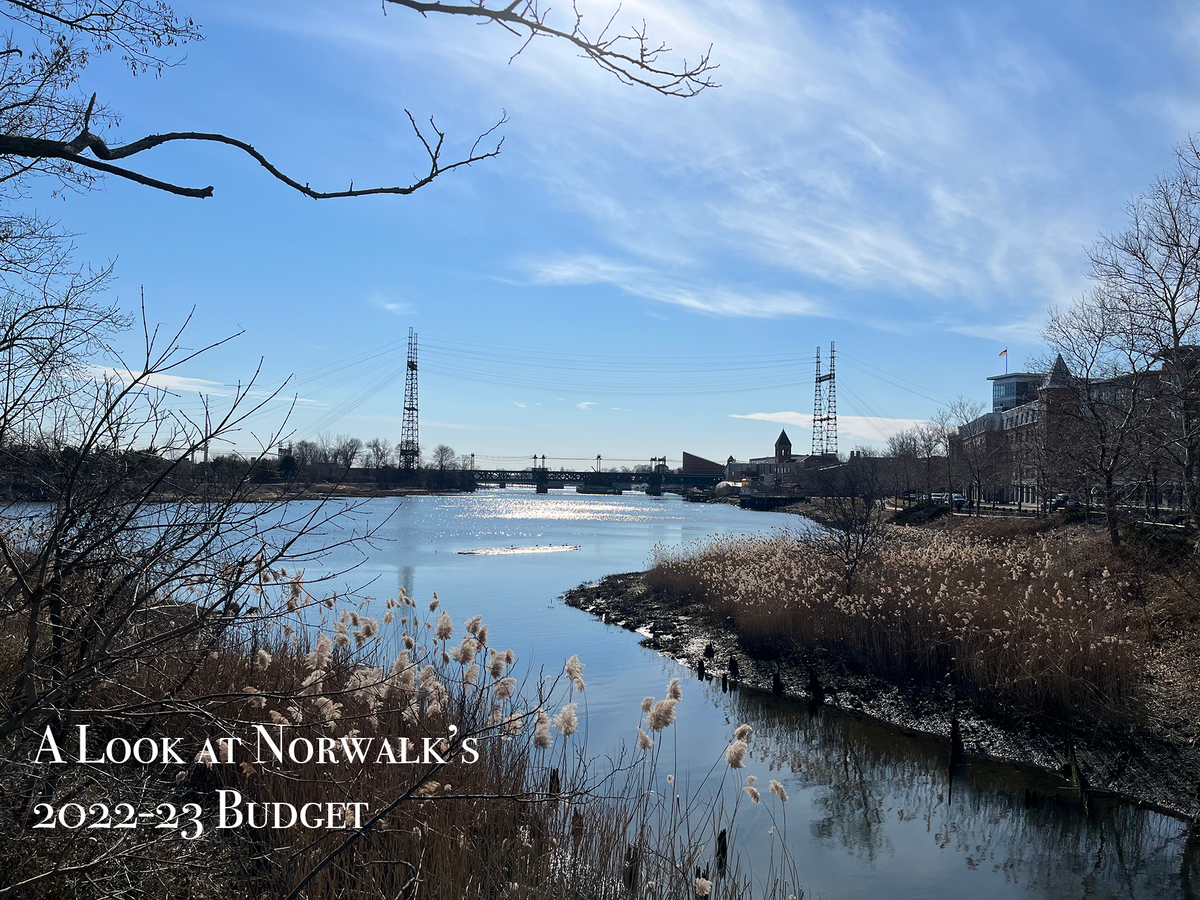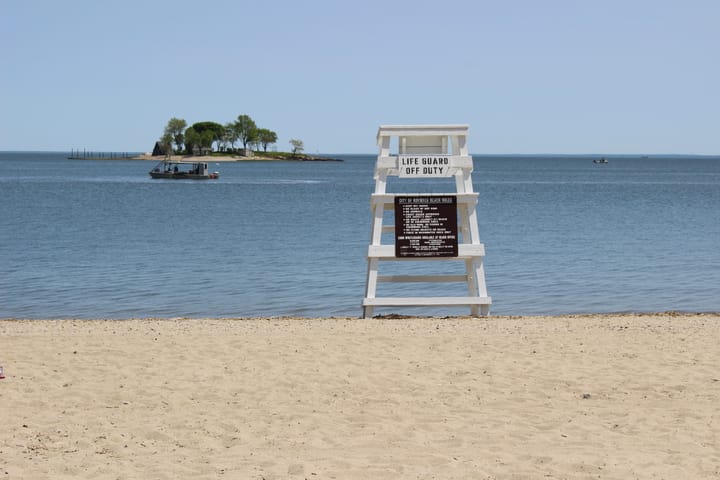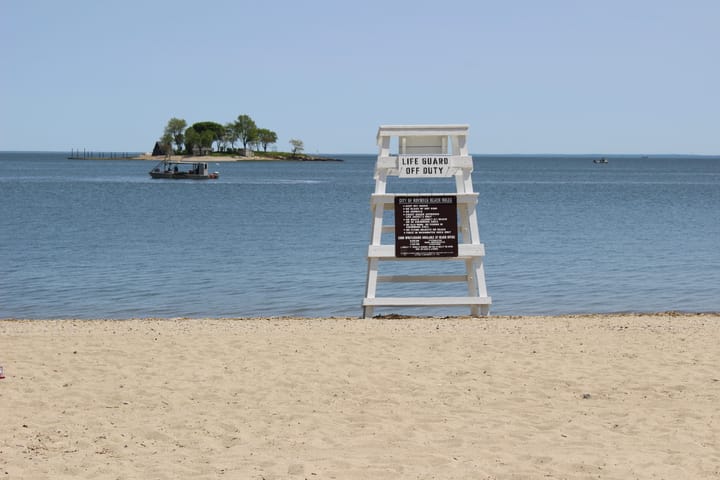A Look at Norwalk's Budget for 2022-23
We examined each community's budget for 2022-23 in southwest Connecticut. Here is a breakdown of Norwalk's.

For 2022-23, Norwalk’s operating budget, which covers the day-to-day operations of the city of more than 90,000 people, is $414,199,874. This budget is an increase of about 4.4% compared to last year's budget of $396.6 million.
More than $364 million comes from local taxes, the majority of revenue for the city. Norwalk will receive about $26.8 million in revenues from state and federal governments, such as through the education cost sharing formula from the state. Department revenues are projected for about $10.3 million with an additional $12 million+ coming in other revenues, such as transfers from last year’s fund balance and interest.
Let’s take a look at how the budget breaks down by section in this town.
Education
About 52.6% of Norwalk’s budget, or just under $217.9 million goes toward the school district.
In general, the education budget covers many areas, including: salaries and benefits for teachers, administrators, and staff; curriculum materials; support services in schools; special programs, such as career pathway programs for high schoolers; and athletic and extracurricular materials.
In Norwalk, some education highlights include:
- Working to address students’ academic and social needs coming out of the COVID-19 pandemic
- Providing support services to students with special needs and those who speak multiple languages
- Continuing to work on plans for the new South Norwalk School
Public Safety
About 11.9% of Norwalk’s budget, or $49.4 million goes toward the city’s public safety efforts, which include fire, police, and emergency communications.
Generally, the public safety budget covers many areas, including: salaries for police officers, firefighters, administrators, and support staff; equipment, such as body cameras; training programs; emergency communications; and emergency preparedness resources.
In Norwalk, some public safety highlights include:
- Recruiting a diverse pool of qualified candidates for the police department
- Completing citywide radio system infrastructure upgrade for emergency responders
- Hiring new part-time fire inspectors .
Public Works
About 6.4% of Norwalk’s budget, or $26.4 million supports the public works budget for the city. Public works covers many areas including parks and recreation, engineering, operations, road maintenance, and more.
The budget for public works generally includes funding for efforts in those departments, such as: road and sidewalk maintenance; engineering and design work; resources to maintain parks and recreation facilities, as well as infrastructure support; salaries for public works administration and staff; wastewater and stormwater management; and support for trash and recycling.
In Norwalk, some public works highlights include:
- Continued studies and work to make storm sewer improvements to mitigate flooding throughout the city.
- Enhanced maintenance of watercourses, such as removing sediment from them, and drainage infrastructure, such as cleaning out pipes
- Implement the street construction plans along Wall Street to improve walkability and driver safety
Community and Human Services
About 2.7% of Norwalk’s budget, or $11.2 million goes toward community and human services in the city. Everything from health departments to libraries, mental health services to youth and senior needs falls into community and human services. This category also includes funding that cities give to local nonprofits and agencies to provide some of these services.
In Norwalk, some of the highlights for community and human services include:
- Creating a Community Resources Hub with staff and space to serve the public
- Adding an epidemiologist at the health department
- Providing more staffers to work with youth services
Economic and Community Development
About 1.3% of Norwalk’s budget, or $5.3 million is for economic and community development-related efforts, which include planning, zoning, and land use departments.
Generally, this budget includes the work of those departments, such as: application reviews; city-wide plans; zoning and building code enforcement; updates to the zoning regulations; business support; art and history commissions; tourism activities; and salaries for economic and community development staff.
In Norwalk, some of the economic and community development highlights include:
- Complete the update of the zoning regulations
- Creating and adopting an affordable housing plan
- Finishing the transportation master plan
General Government
About 3.1% of Norwalk’s budget, or $12.9 million supports general government needs in the city, which includes the office of the mayor, finance, town clerk, IT, human resources, legal, customer service, and support staff for elected officials, such as the Common Council..
The general government budget includes the work and people in those departments, such as salaries for employees in those areas; customer support initiatives and programs, such as “click and report” applications; communications to the public; records keeping; licenses, such as marriage and dog licenses; IT support; tax collection; budgets; and agendas and meeting materials.
In Norwalk, some of the general government highlights include:
- Adding resources in cybersecurity and IT
- Additional tracking of customer service tickets and increase the rate of closing tickets
- Expanding the mayor’s dashboard to update the public on information about the city
Employee Benefits and Pensions
About 13% of Norwalk’s budget, or $54.1 million goes toward employee benefits and pensions.
Debt Service
About 8.5% of Norwalk’s budget, or $35.3 million, goes toward debt service.
Other
About 0.4% or just under $1.8 million goes toward other costs in the city.
If you’d like more information, view the full city budget.
How we did this: We went through each community’s published budget and found the budgeted expenses by department and put them into the categories listed above. Please note: Not every municipality categorizes its budgets the same way. For example, some put Parks and Recreation under Public Works, some separate it. For consistency, we tried to move and place the same departments into the same buckets.



